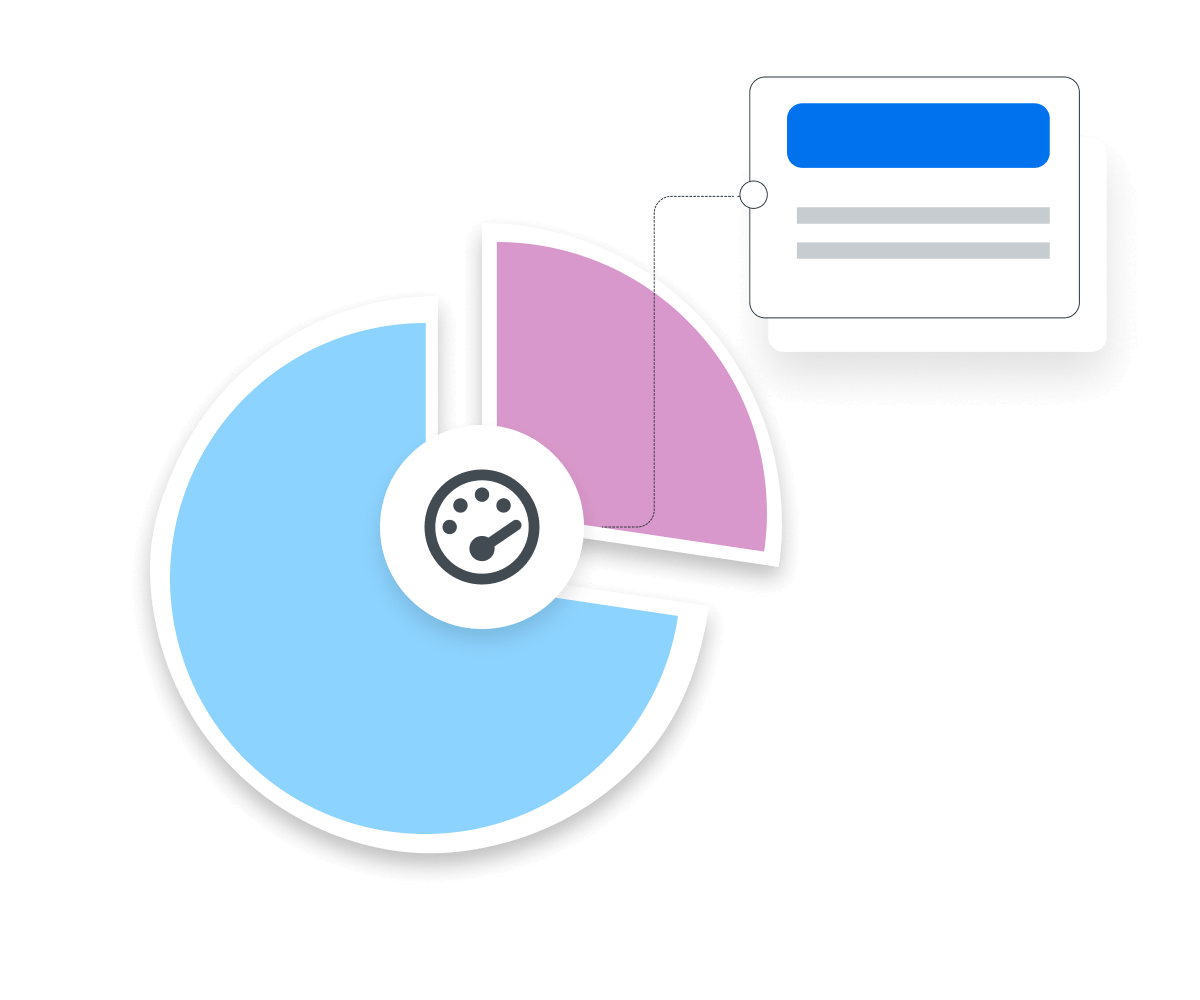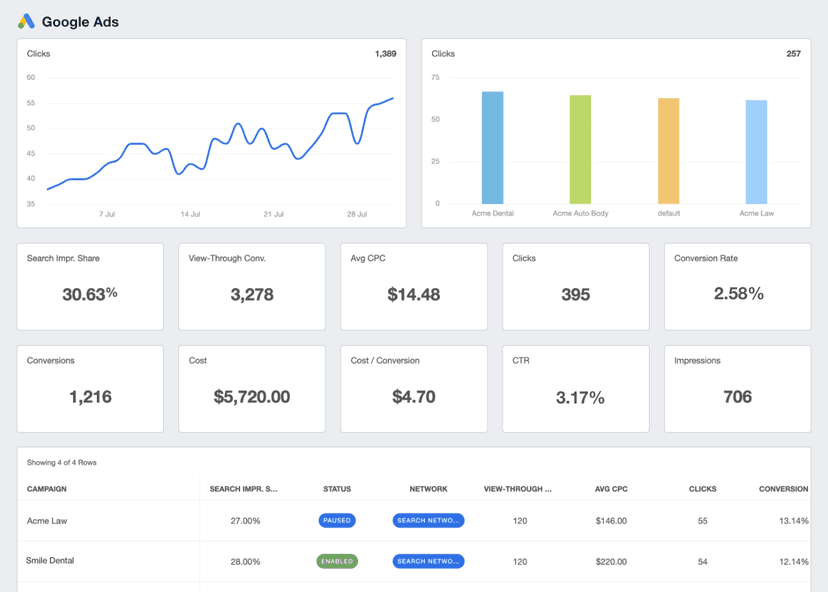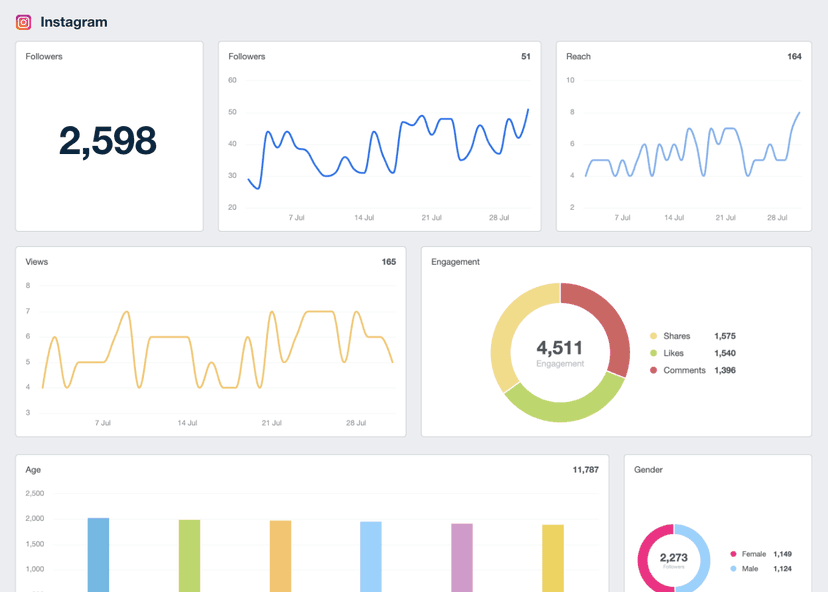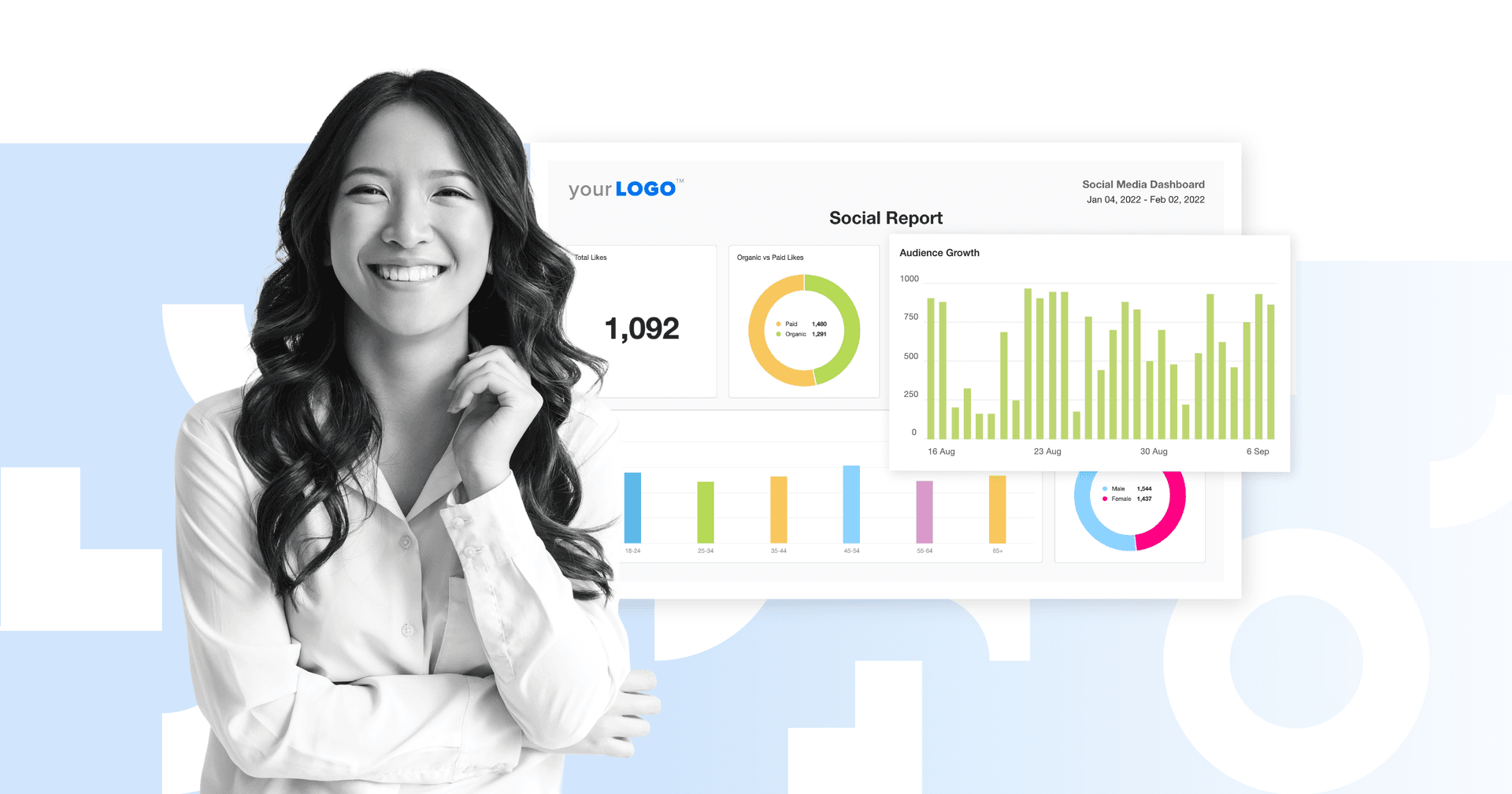Return on Investment (ROI)
Budget Allocation
ROI guides where to allocate marketing resources for maximum impact.
Performance Benchmarking
Compare ROI across campaigns or date ranges for trend analysis.
Strategic Decision-Making
Informs campaign scale-up, targeting adjustments, or strategy shifts.
Client Reports
Demonstrates agency value through concrete ROI figures, strengthening client trust.
What Is ROI and Why Is It Important?
ROI tells a marketer if an investment–be it time, money, or effort–is paying off. Essentially, the ROI equation offers a straightforward way to measure the bottom-line contribution of various marketing channels and campaigns, guiding smarter decision-making and resource allocation.
ROI is often used interchangeably with Return On Ad Spend (ROAS), a similar yet distinct metric. ROAS zeros in on the gross revenue generated from ad expenditure, focusing only on advertising costs and top-line revenue.
ROI offers a more comprehensive look at the overall financial health of a marketing campaign, including all associated costs such as campaign costs, marketing fees, and more. It even considers profit margins on the product or service being marketed, providing a more complete picture of how the campaign contributes to the bottom line.

Stop Wasting Time on Manual Reports... Get Insights Faster With AgencyAnalytics
How ROI Relates to Other KPIs
ROI gains more depth and actionable insights when interpreted alongside other KPIs. For instance, Ad Spend directly affects ROI, as high spending with low returns will deflate the ROI ratio.
Conversion Rates also play a pivotal role; higher Conversion Rates usually lead to a more favorable ROI. Average Order Value (AOV) and Cost of Goods Sold (COGS) refine ROI calculations by accounting for the revenue and costs per transaction.
Agency Markup is another lens through which ROI is viewed, especially from the agency's perspective. A high ROI could justify a higher markup, reinforcing the agency's value proposition to the client.

How To Calculate ROI
Calculating ROI doesn't require a math degree, but it does demand a basic understanding of a campaign's financial ins and outs. One pitfall many marketers stumble into is confusing revenue with gross profit or net income, a mistake that distorts the accuracy of the ROI.
The basic ROI calculation starts with identifying the Gross Profit from the investment; this is the revenue generated minus the costs to produce and fulfill the orders, commonly referred to as the Cost of Goods Sold (COGS).
Subtract the marketing spend and divide that net gain by the initial cost of the investment to get a ratio. Always take into account the costs associated with the campaign or order but not other business costs such as overhead, maintenance costs, or taxes.
It’s important to note that ROI is not always expressed as a percentage. While presenting it as a percentage is common for ease of interpretation and comparison, it's also represented as a ratio or a raw number. For example, an ROI of 0.2 indicates a 20% return, and an ROI of 2:1 signals that the return is two times the initial investment. The choice of format often depends on the context in which the ROI is being evaluated and the audience's familiarity with financial metrics.
Formula Example To Calculate Return on Investment
What Is a Good ROI?
A good ROI typically signifies a return that sufficiently exceeds the investment cost, indicating a profitable campaign. For many industries and marketing initiatives, an ROI above 3:1 is considered healthy, but keep in mind that not every campaign or ad will hit that mark.
What Is a Bad ROI?
A bad ROI falls short of covering the initial investment or needs to provide more return to make the campaigns sustainable. With some exceptions, if the ROI is less than 1:1, a glaring red flag should signal an urgent need for strategy reevaluation.
How To Set ROI Benchmarks and Goals
The acceptable ROI ratio will vary based on many factors, including industry benchmarks, the scale of the campaign, and the strategic goals of the business.
For businesses with high operational costs, a 3:1 ROI might be satisfactory but not stellar. On the flip side, low-cost, high-volume businesses might celebrate this ROI as a huge win.
It's critical to have a target ROI before launching a campaign. Knowing the desired ROI provides a framework for measuring success and makes it easier to decide if the results justify the investment.
Agencies often utilize historical data to set benchmarks tailored to specific industries, clients, or campaigns. By comparing ROI outcomes from past campaigns to current figures, an agency gains a richer understanding of what to expect and more accurately sets ROI goals.
Back-calculating required ROI also helps hit specific revenue targets. If a campaign needs to generate $80,000 in net profits and the available marketing budget is $20,000, the required ROI becomes 80,000/20,000 x 100, which is 400% or an ROI of 4:1.
However, a lower initial ROI (or even a negative ROI) might be acceptable if the Customer Lifetime Value (CLTV) is substantial and the client has the patience for long-term profitability. This perspective shifts the focus from immediate gains to sustainable growth, making a seemingly low ROI more palatable.
Digging deeper into ROI means breaking down the metric by channel, customer segments, or date ranges. For instance, calculating the ROI for paid search separately from social media provides insights into channel effectiveness, and looking at ROI for brand versus non-brand search campaigns provides insights into acquisition strategies. Calculating ROI for different customer demographics could reveal new opportunities or areas for improvement.
Incorporating an annualized ROI formula offers the benefit of standardizing ROI figures across different time frames, which provides more accurate comparisons and assessments of long-term campaign performance.
Why ROI Is a Priority for Clients
ROI is the ultimate report card on a client’s investment in marketing campaigns. It's the straightforward answer to a simple question: "Is this particular investment paying off?" The ROI figure wraps up the cost of investment and the value of investment into one neat package, revealing the profit or loss generated. A strong ROI is essentially a green light, signaling that investing capital in a particular campaign is worth it.
But ROI isn't an endgame figure; it's an ongoing measure that should be scrutinized regularly. Frequent assessments allow clients to pivot strategies and budgets as necessary.

Why ROI Matters to Agencies
While clients see ROI as a sign of a campaign's financial success, agencies view it as a trust and retention metric. A favorable ROI number speaks volumes about the agency's capability to deliver value, which helps in client retention and acquiring new business.
Moreover, ROI serves as an internal yardstick for performance and resource allocation. An agency uncovers actionable insights by dissecting ROI on specific channels or initiatives. This information helps fine-tune strategies to maximize ROI and determine where to allocate resources.
Consistently hitting ROI targets not only validates the agency's expertise but also significantly increases the likelihood of clients sticking around for the long haul.

Better, Faster & Easier Client Reports Are Just a Few Clicks Away
Best Practices When Analyzing and Reporting ROI
Thoroughly dissecting ROI sets the foundation for laser-focused, cost-effective advertising initiatives. It elevates a campaign from guesswork to a fine-tuned machine that is consistently delivering results.
Analyze ROI Over Time
Analyzing ROI over time allows for a fuller understanding of long-term investment returns. This provides a historical context that informs future strategies and helps measure ROI effectively.
Channel-Specific ROI Data
Each advertising channel offers different strengths and weaknesses. By analyzing ROI across channels, marketing agencies assess the effectiveness of the investment relative to the returns each channel provides.
Extract Campaign-Level ROI Insights
Quickly identify which themes or strategies are most effective by comparing ROI across various campaigns. It's a transformative metric used to benchmark and adapt future initiative
Convert Data to Actions
It's not enough to just present the ROI figures. Each report should end with actionable steps that show how to capitalize on the results, ensuring continued client engagement.
Decode ROI Variability
Noticing trends and anomalies in ROI data provides clues to underlying performance factors that might not be immediately obvious. This sort of keen observation spots areas needing attention and reveals hidden opportunities.
Visualize ROI Performance
Graphs and charts condense complicated data into straightforward insights, facilitating better decision-making for agencies and clients alike.
Facebook Ads Dashboard Example

Related Integrations
How To Improve ROI
Improving the Return on Investment of a marketing campaign doesn't have to be a shot in the dark. With accurate data and the right strategies, a few changes lead to significant results.
Refine Targeting
Adjust the campaign targeting to focus on audiences more likely to convert. Use customer data to pinpoint demographics, interests, or behaviors that correlate with higher engagement and sales.
Leverage Brand & Retargeting
Brand and retargeting campaigns typically offer higher ROI because they focus on people who've already shown interest—remarket to website visitors or past customers to encourage repeat purchases.
Optimize Ads
Run A/B tests to determine the most effective ad creatives, messages, and landing pages. Replace low-performing elements to improve click-through rates and conversions.
Related Blog Posts
See how 7,000+ marketing agencies help clients win
Free 14-day trial. No credit card required.











